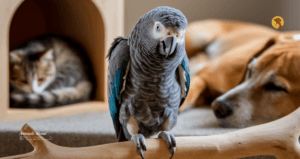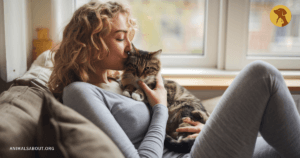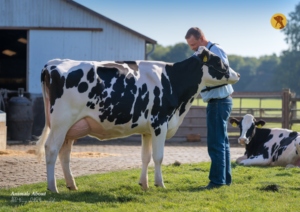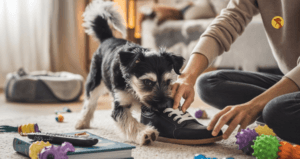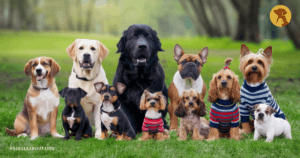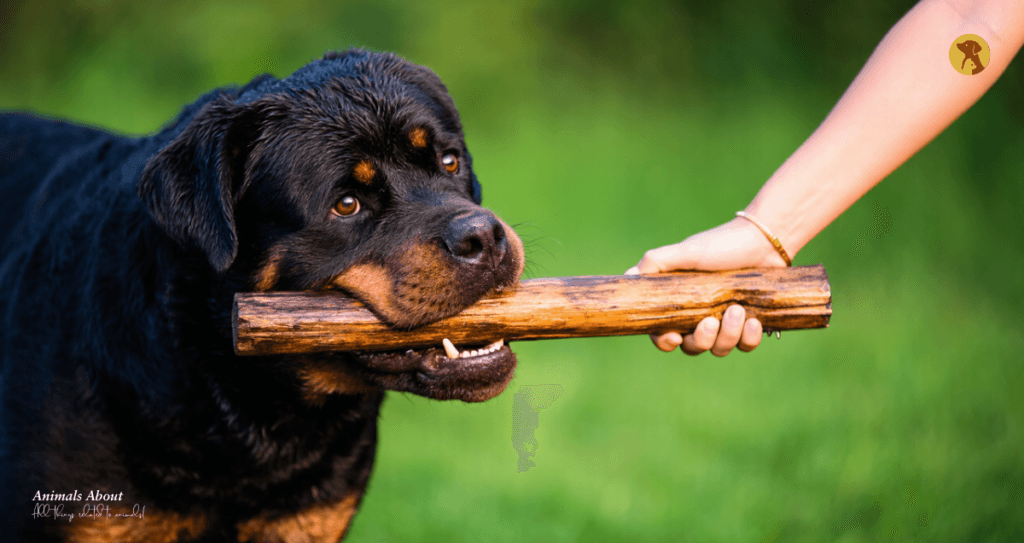
Stop Dog Aggression – If your dog is aggressive towards strangers, it can be a deeply concerning and emotionally draining experience. Whether your dog is growling, barking, lunging, or showing other signs of aggression, it’s important to address the issue promptly and effectively. Aggression in dogs is a complex behavior that can stem from fear, anxiety, territorial instincts, or even past trauma. The good news is that with patience, understanding, and the right approach, you can help your dog overcome these challenges.
In this comprehensive guide, we’ll dive deep into the world of canine aggression. We’ll explore the root causes of aggressive dog behavior, provide actionable tips for stop dog aggression training, and discuss how to socialize an aggressive dog. We’ll also cover calming techniques for anxious dogs, behavior modification strategies, and when to seek professional help. By the end of this article, you’ll have a clear roadmap to help your dog become more comfortable around strangers and reduce the risk of dog attacks.
Understanding Canine Aggression: What’s Behind the Growl?
Aggression in dogs is not a one-size-fits-all issue. It can manifest in different ways and for different reasons. To effectively stop dog aggression, it’s crucial to understand what’s driving your dog’s behavior. Here are some common types of aggression:
- Fear-Based Aggression:
Dogs that feel threatened or scared may react aggressively as a defense mechanism. This is especially common in dogs that haven’t been properly socialized or have had negative experiences with strangers. - Territorial Aggression:
Dogs are naturally protective of their home and family. If your dog sees strangers as intruders, they may bark, growl, or even lunge to defend their territory. - Protective Aggression:
Like territorial aggression, protective aggression occurs when a dog perceives a threat to their owner or family members. This can be triggered by unfamiliar people approaching too quickly or getting too close. - Leash Reactivity:
Some dogs become aggressive when leashed because they feel restrained and vulnerable. This can lead to barking, growling, or lunging at strangers or other dogs. - Pain-Induced Aggression:
If your dog is in pain due to an injury or illness, they may become more aggressive as a way to protect themselves from further discomfort. - Resource Guarding:
Dogs that are possessive of their food, toys, or other resources may show aggression when they feel these items are being threatened.
Understanding the type of aggression your dog is displaying is the first step toward addressing the issue. Observing your dog’s body language and triggers can provide valuable clues.
Signs of Aggression in Dogs: What to Look For
Recognizing the early signs of aggression can help you intervene before the situation escalates. Common signs include:
- Growling or snarling
- Barking excessively at strangers
- Lunging or charging
- Baring teeth
- Stiff body posture
- Raised hackles (the fur along the back)
- Intense staring
- Snapping or biting
If you notice any of these behaviors, it’s important to take action immediately. Ignoring the problem can lead to more serious issues, such as dog attacks or injuries.
How to Stop Dog Aggression: Proven Strategies
Stopping dog aggression requires a combination of training, patience, and consistency. Here are some effective strategies to help you manage and reduce aggressive behavior:
1. Desensitization Training for Dogs
Desensitization involves gradually exposing your dog to the triggers that cause their aggression in a controlled and positive way. For example, if your dog is aggressive towards strangers, start by having a friend stand at a distance where your dog feels comfortable. Reward your dog with treats and praise for calm behavior. Over time, gradually decrease the distance as your dog becomes more relaxed.
2. Counter-Conditioning
Counter-conditioning is a technique that changes your dog’s emotional response to a trigger. For instance, if your dog growls at strangers, you can teach them to associate strangers with positive experiences. Every time a stranger appears, give your dog a high-value treat or engage them in a fun activity. Over time, your dog will learn that strangers mean good things.
3. Socializing an Aggressive Dog
Socialization is crucial for preventing and reducing aggression. If your dog wasn’t properly socialized as a puppy, it’s never too late to start. Introduce your dog to new people, places, and experiences in a controlled and positive manner. Use treats, toys, and praise to create positive associations.
4. Calming an Anxious Dog
Anxiety is a common underlying cause of aggression. To help your dog feel more relaxed:
- Provide a safe space where your dog can retreat when they feel overwhelmed.
- Use calming aids like anxiety wraps, pheromone diffusers, or calming supplements.
- Ensure your dog gets plenty of exercise and mental stimulation to reduce stress.
5. Training a Reactive Dog
Reactive dogs overreact to stimuli, such as strangers or other dogs. Teach your dog to focus on you by using commands like “look” or “leave it.” Practice these commands in low-stress environments before gradually introducing more challenging situations.
6. Managing Territorial Dogs
If your dog is territorial, create boundaries to help them feel more secure. For example, use baby gates to restrict access to certain areas of your home. Teach your dog a “place” command, where they go to a specific spot and stay there when guests arrive.
Preventing Dog Attacks: Safety Tips
While working on behavior modification, it’s important to keep everyone safe. Here are some safety tips:
- Always keep your dog on a leash in public.
- Use a muzzle if your dog has a history of biting.
- Inform guests about your dog’s behavior and ask them to avoid direct eye contact or sudden movements.
- Supervise interactions between your dog and strangers.
When to Seek Professional Help
If your dog’s aggression is severe or you’re unsure how to handle it, it’s time to seek professional help. A certified dog trainer or veterinary behaviorist can assess your dog’s behavior and create a personalized training plan. They can also rule out any underlying medical issues that may be contributing to the aggression.
Disclaimer: The information provided in this article is for educational purposes only. For serious behavioral issues, consult a certified professional dog trainer or a veterinary behaviorist. Visit our website, animlasabout.org, for more resources on animal care.


